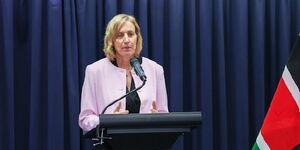Fresh hope has been injected into Kenya's electric vehicle landscape after the Energy and Petroleum Regulatory Authority (EPRA) announced plans to revise Kenya's special electricity tariff for electric mobility users.
The authority aims to encourage more usage of electric vehicles by removing the current monthly consumption cap of 15,000 units.
According to EPRA’s latest report for the financial year ending June 30, 2025, electricity consumption under the e-mobility tariff grew by 5.04 gigawatt-hours (GWh), marking a 300 per cent increase from the previous year's 1.26 GWh.
The sharp hike is an indicator of the growing interest and demand in electric mobility solutions among Kenyans, prompting the Authority to consider removing barriers like the consumption cap.
The e-mobility tariff was introduced in 2023 to boost the use of electric vehicles in the country. The tariff offered a base rate of Ksh16.00 per kilowatt-hour, with additional discounts during off-peak hours, including late nights, Sundays, and some public holidays.
By mid-2025, the country had 69 customers using the e-mobility tariff, with at least 44 of them enjoying benefits from the Time of Use (ToU) discount. Energy costs can be slashed by up to 50 per cent during off-peak hours, making charging electric vehicles relatively affordable.
While the strategy initially proved effective, the rising need for electricity has brought the need to remove the cap to encourage large electricity users, such as EV charging station operators and companies that specialise in electric fleets, to expand their services without having to worry about consumption limits.
According to EPRA, the proposed change is part of a wider effort by the government to support the transition to clean energy for transport, which is electric-powered.
The report estimates that by June 2025, 6,442 electric vehicles had been registered in Kenya, with the number of EV charging stations also growing to about 300 countrywide by September.
While the growth is significant, electricity use fr e-mobility still makes up a mere 0.04 per cent of Kenya's total power consumption. By updating the tariff structure, EPRA believes removal of restrictions will help grow the sector and attract more investment.
Kenya has set a bold target to reduce carbon emissions by a whopping 32 per cent by 2030. With less than half a decade to go, tapping into greener energy in the transport sector is projected to go a long way in helping the country achieve this target.
The transport sector is one of the largest contributors to carbon emissions globally, accounting for about 23 per cent of total emissions.












